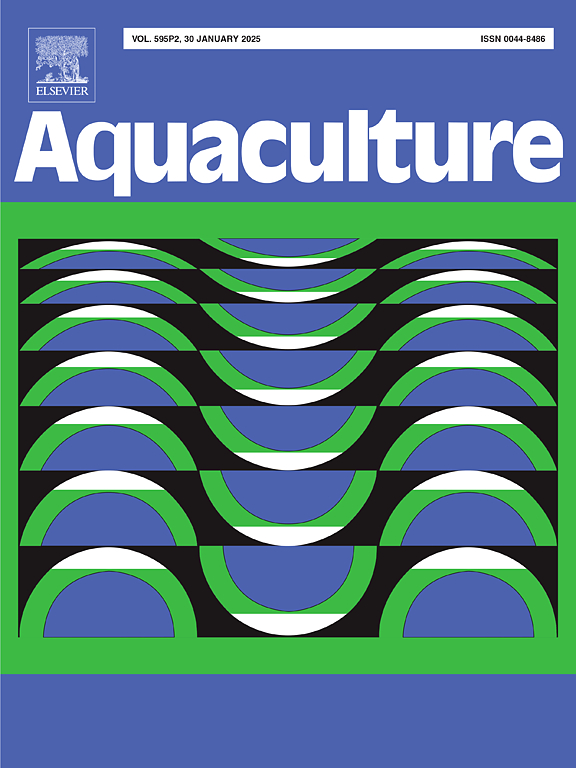Effects of dietary bay leaf (Laurus nobilis) aqueous extract on growth performance, feed utilization, antioxidant activity, immunity, and gene expression in Nile tilapia (Oreochromis niloticus)
IF 3.9
1区 农林科学
Q1 FISHERIES
引用次数: 0
Abstract
This study evaluated the effects of dietary Laurus nobilis leaf extract (LNLE) on growth performance, feed utilization, organ indices, histological structure, biochemical parameters, immune responses, and gene expression in Nile tilapia (Oreochromis niloticus). The experimental diets were nutritionally balanced, containing 31.27 % crude protein and 7.25 % crude lipid. After acclimatization, tilapia juveniles were randomly distributed into 18 hapas (6 treatments in triplicate) with 20 fish per hapa (initial weight: 6.04 ± 0.02 g). Over an 84-day trial, fish were fed diets containing LNLE at 0, 100, 200, 300, 400, and 500 mg/kg. Results showed significant improvements in growth metrics, including weight gain, specific growth rate, and feed conversion ratio, with optimal performance observed at 300 mg/kg LNLE. Histological analysis revealed dose-dependent changes in intestinal villi structure, facilitating nutrient absorption, while liver histology demonstrated better hepatic architecture and pancreatic acini at higher LNLE levels (400–500 mg/kg). Biochemical analyses indicated increased protein and globulin levels, reduced cholesterol, and enhanced immune responses, evidenced by elevated lysozyme activity and bacterial inhibition at a dosage of 200 mg/kg LNLE. Antioxidant enzyme activities (superoxide dismutase, catalase, and glutathione peroxidase) were significantly higher in LNLE-supplemented groups (200 mg/kg), with reduced lipid peroxidation. Gene expression analysis showed upregulation of IGF-1 and GLUT4 and downregulation of TNF-α, highlighting LNLE's role in modulating growth and immune-related pathways. In conclusion, LNLE supplementation enhances growth, feed efficiency, immune function, and antioxidant activity in Nile tilapia, demonstrating its potential as a natural growth promoter in aquaculture. Future research should optimize LNLE dosage, assess its long-term effects on health and sustainability, and explore its potential in enhancing disease resistance in commercial aquaculture.
求助全文
约1分钟内获得全文
求助全文
来源期刊

Aquaculture
农林科学-海洋与淡水生物学
CiteScore
8.60
自引率
17.80%
发文量
1246
审稿时长
56 days
期刊介绍:
Aquaculture is an international journal for the exploration, improvement and management of all freshwater and marine food resources. It publishes novel and innovative research of world-wide interest on farming of aquatic organisms, which includes finfish, mollusks, crustaceans and aquatic plants for human consumption. Research on ornamentals is not a focus of the Journal. Aquaculture only publishes papers with a clear relevance to improving aquaculture practices or a potential application.
 求助内容:
求助内容: 应助结果提醒方式:
应助结果提醒方式:


